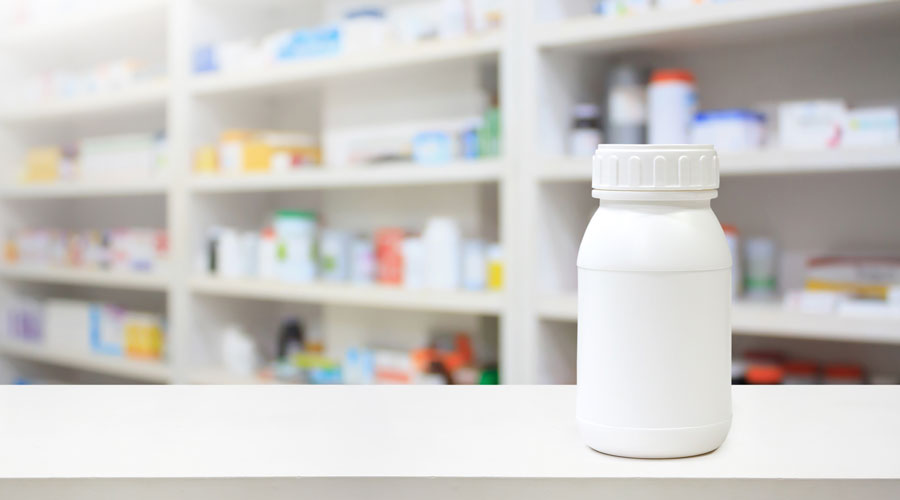NCPA just released its 2021 Digest, which surveyed independent pharmacies across the United States to find out about how they weathered a turbulent 2020.
“In a time unlike any other, the importance of community pharmacists has never been more obvious,” said B. Douglas Hoey, CEO of NCPA. “Digest data helps us demonstrate the value of independent pharmacies to payers, policymakers, and the media, and bolsters our ongoing work to change the pharmacy payment model to compensate and recognize pharmacists for the services they do and can provide.”
Here are the major trends and takeaways identified in the 2021 Digest.
Pharmacy finances improve
After a decade of declining financial indicators for independent pharmacies, 2020 brought some positive news. Independent pharmacies dispensed more prescriptions in 2020 than they did in 2019 — 57,678 prescriptions, up from 57,414 prescriptions.
Sales also rose by an average of $60,123 per location in 2020 for a total of $3,459,814 in annual sales.
Profits stayed relatively steady from 2019 to 2020. While the average gross profit margin dipped from 22 percent to 21.9 percent, gross profit in terms of dollars rose by $11,029, on average.
While the year-to-year changes for independent pharmacies were good, the report noted that overall, the industry is still worse off than it was 10 years ago, when a typical pharmacy could expect annual sales of $3,831,000 and a profit margin of 22.9 percent.
Pharmacists step up as providers
Last year gave community pharmacies ample opportunity to step up and provide more comprehensive healthcare services to patients. Here’s how many pharmacies answered the call.
Niche successes
One critical trend in the evolution of independent pharmacy is building partnerships with other healthcare providers in the community. Thirty-seven percent reported having a collaborative drug therapy agreement with a local physician, which means pharmacists can take more initiative to perform physical assessments on patients, substitute or discontinue therapies, order lab tests, and more.
Seventeen percent of pharmacies have a non-pharmacy health employee in their practice to help provide more comprehensive care. These professionals include:
- Community health workers
- Nutritionists
- Physician’s assistants
- Nurse practitioners
- Registered nurses
Other emerging niches include having a pharmacist on staff who spends more than half their time working as a clinical coordinator, working with local health systems to provide transitions of care, and providing patient education.
These services allow pharmacists to stay on the cutting edge of the industry and become more involved with big-picture patient care.
Wellness services
Wellness services are another way independent pharmacies are breaking into patient care. Immunizations — both flu and non-flu — were the top wellness services offered by independent pharmacies in 2020. The percentage of pharmacies offering the flu shot jumped from 77 percent to 84 percent, and the percentage of pharmacies offering non-flu immunizations climbed from 73 percent to 80 percent.
Other popular services were blood pressure monitoring, offered by 53 percent of pharmacies, and diabetes management and education, offered by 30 percent of pharmacies. These services can be critical in improving outcomes for patients with cardiovascular disease and diabetes.
Additional wellness services, like lipid monitoring, asthma management, and osteoporosis screening, serve as a complement to traditional dispensing and can ensure patients are getting the best possible outcomes with the right therapies.
Covid-19 brings challenges , solutions
This year’s NCPA Digest is the first to take into account the effect the coronavirus pandemic has had on independent pharmacies.
In many ways, the pandemic accelerated pharmacy’s transition into a community healthcare hub. In the early days, many doctors’ offices and hospital facilities were closed, but pharmacies stayed open. When patients needed care, pharmacies were often the only place they could turn.
Point-of-care testing expanded as pharmacists worked to increase access to Covid-19 tests in their communities. Covid-19 diagnostic testing was the most popular point-of-care test in 2020, with 32 percent of pharmacies offering the service.
With the introduction of the Covid-19 vaccine in late 2020 and early 2021, many independent pharmacies have worked to expand their immunization capabilities.
However, the pandemic has also introduced some struggles. In a June 2021 survey, NCPA found that pharmacies were having a difficult time finding candidates to fill open positions. This worker shortage is most dire when it comes to filling pharmacy technician positions, which has affected 90 percent of pharmacies.
Additionally, many pharmacies expanded their delivery service during the pandemic but are now finding delivery drivers in short supply.
To combat worker shortages, 72 percent of pharmacies said that they have raised wages to attract qualified candidates.
Pharmacies using more technology
Advances in technology continue to make independent pharmacies more efficient. The Digest notes that most pharmacies have already adopted computerized records and claims billing and that the next step in new pharmacy tech will be integrating the Pharmacist eCare Plan, which allows pharmacists and patients to get on the same page with regards to their medications and treatments.
Pharmacies continue to utilize emerging technologies to streamline their practice and provide more advanced patient care. Some of the most common new tech that pharmacies reported using include:
- Online patient scheduling
- Medication compliance packaging (pharmacy robotics)
- Mobile commerce site
- Using health information networks to exchange clinical data
- Videoconferencing for telehealth visits with pharmacists
Social media also continues to be an important method of communication for independent pharmacies. Facebook is the most commonly used platform, followed by a pharmacy mobile app. These platforms can be used to advertise to new patients and communicate quickly with existing patients.
Independents contribute to community
Independent pharmacies continue to fill an important role in their communities — both from a public health perspective and a civic perspective.
According to the Digest, community pharmacies are typically located in rural areas that may not have access to other comprehensive healthcare. Seventy-four percent of respondents serve areas with populations less than 50,000 people.
On average, they employ 11.1 full-time and part-time workers, and in addition to creating jobs, they also put down roots in their community through civic engagement.
Fifty-eight percent of community pharmacy owners or employees are members of their local Chambers of Commerce, and 60 percent of owners give monetary support to at least five organizations in their community. Four percent of pharmacy owners and employees contribute to their community by holding an elected state or local position.
A Member-Owned Company Serving Independent Pharmacies
PBA Health is dedicated to helping independent pharmacies reach their full potential on the buy-side of their business. Founded and run by pharmacists, PBA Health serves independent pharmacies with group purchasing services, wholesaler contract negotiations, proprietary purchasing tools, and more.
An HDA member, PBA Health operates its own NABP-accredited warehouse with more than 6,000 SKUs, including brands, generics, narcotics CII-CV, cold-storage products, and over-the-counter (OTC) products — offering the lowest prices in the secondary market.












